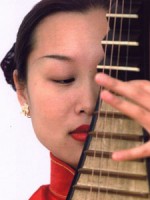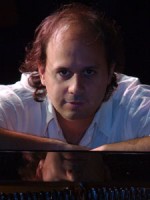Title
Our world is continually getting smaller and smaller. The surge of Internet use in our daily lives and the increase of international trading and interdependence have impacted our society in significant ways, including changing our cultural landscape. China, for example, has become a hotbed of artistic activity, and there has been more Chinese artwork on the visual arts scene than ever previously imagined. In the music field, many concert musicians and organizations in our own country have been increasingly influenced by music traditions outside the Western canon. One of the most recognizable efforts comes from the Silk Road Ensemble, as its members make connections between different cultural groups. Ensembles such as the Kronos Quartet, known for its cross-cultural and adventurous programming, are being regularly embraced by presenters and audiences alike.
Body
As a reaction to these trends, faculty member Edward Bilous and I started a series in 2005 titled World Music at Juilliard, in conjunction with the World Music Institute. Open to the entire Juilliard community, the presentations by guest artists—often from foreign countries—demonstrate, through both lecture and performance, key elements of their musical traditions. We have had visits from such international artists as tabla player Zakir Hussain, the Balinese gamelan group Çudamani, and the Gang-A-Tsui Nanguan ensemble from Taiwan. This season, three programs will be presented in Paul Recital Hall
Pianist Gustavo Casenave opened the series on October 1. Born in Uruguay, Casenave is an expert on the subject of tango and recently performed and served as music director in the World Music Institute-sponsored production ofTango Noir at Symphony Space. A compelling pianist, he started his Juilliard presentation with a tango improvisation. Then his talk began by addressing the origins and development of tango from the early 1900s to the present day. Next, he demonstrated the different variations of tango, including the vals (a Latin-American form of the waltz) and the milonga, which Casenave called a “happy tango.” Perhaps the most exciting portion of his talk was his breakdown of the different elements of tango, including what he termed “tango clichés,” such as the use of long piano glissandi, dominant-to-tonic chord progressions, and a “dirty” bass-heavy style of playing. At the end of his talk, he performed a gripping rendition of a work by Astor Piazzolla.
On November 19 at noon, pipa player Liu Fang will be our guest artist. A foremost representative of the younger generation of pipa (Chinese lute) soloists, Liu Fang was born in China in 1974 and studied at the Shanghai Conservatory of Music. Since moving to Canada in 1996, she has had an impressive international career and received many honors, including the L’Académie Charles Cros Award (the French equivalent of the Grammy). Her repertoire features music from the classical tradition as well as contemporary works, including Ghost Opera by Tan Dun and the King Chu Doffs His Armour by Zhou Long. She is also familiar with more standard concert works, having performed improvised music in Gustav Mahler’s Das Lied von der Erde. Since 2007 she has been collaborating with violinist Malcolm Goldstein on new and improvised music.
Composer and cross-cultural percussionist Adam Rudolph will close the series on February 18 at noon. Originally from Chicago, he has been appearing for the past three decades at festivals and concerts throughout North and South America, Europe, Africa, and Japan. Rudolph has developed a unique synergetic approach to hand drums in creative collaborations with many masters of cross-cultural and improvised music. He is known as one of the early innovators of what is now called “World Music” and co-founded the Mandingo Griot Society, one of the first groups to combine African and American music. He explains on his Web site: “Most musicians come to grasp an understanding of music in terms of style. … When you look underneath style, then you see more basic components, like rhythm and harmony. But at an even more essential level there is music as vibration; and I think this is the deepest level of understanding we can pursue.”
Please join us in these exciting events—they will provide you with a worldly experience!






